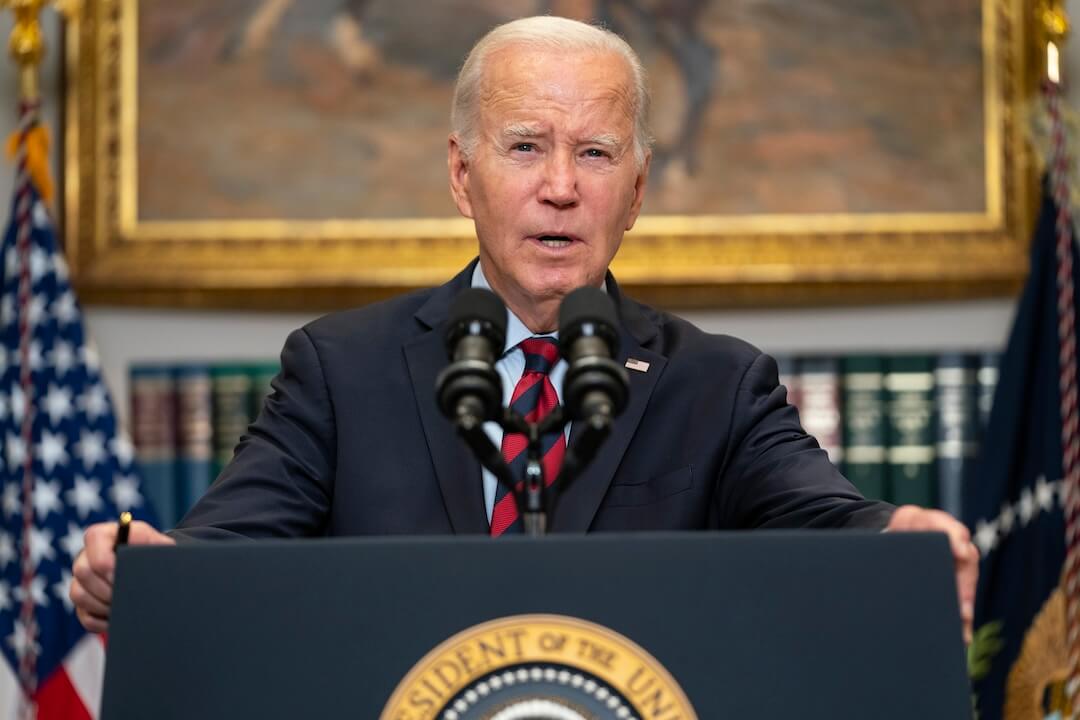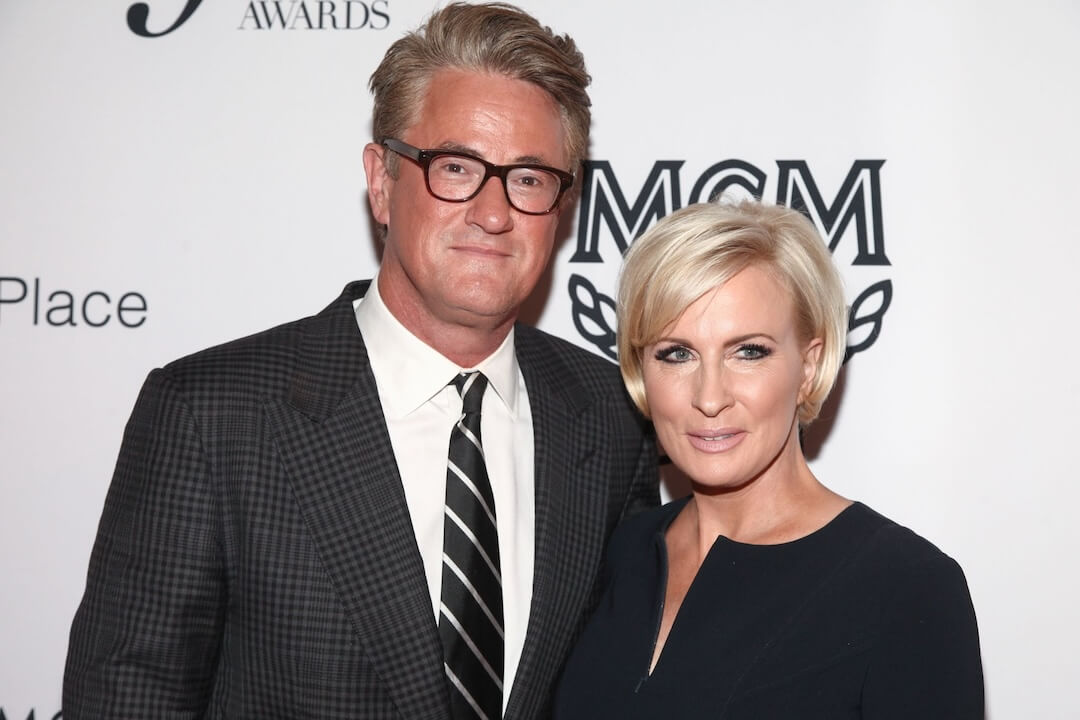Americans have consistently expressed concern about increased living costs, especially after inflation peaked at a four-decade high of about 9% in summer 2022. Although the year-over-year inflation rate has eased to about 3%, it’s unsurprising that inflation came up when Time magazine interviewed President Joe Biden for a June 4 story.
In the interview transcript, Time staff said, “Cumulative inflation means prices are up nearly 20% since you took office and wage increases have not kept pace.”
Biden replied, “Wage increases have exceeded what the cost of inflation, which you’re talking about as the prices that were pre-COVID prices.”
He continued, “Pre-COVID prices are not the same as whether or not they — you have … corporate America ripping off the public now. You have everything from shrinkflation to what’s going on in terms of the way in which they’re artificially moving significantly to increase their … profits. That’s not the same as inflation. That’s price gouging.”
For this fact-check, we examined only Biden’s comment about wages and inflation.
When inflation rises faster than wages, consumers tend to dip into savings to cover everyday costs, and buy less. When wages rise faster than inflation, consumers can afford to buy and save more.
However, the wage and inflation comparisons can vary significantly depending on when you start the clock.
Using the standard measurements that compare inflation and wages, and the time frame the interviewer used — Biden’s entire presidency, which started in January 2021 — Biden is incorrect. Inflation has outpaced wages during that time period.
However, wages have outpaced inflation when compared with the past one- and two-year periods, and with their prepandemic levels — the last data available before a few years in which the pandemic’s effects wreaked havoc on economic statistics.
To check Biden’s statement, we looked at how two standard federal statistics have tracked in recent years: The consumer price index, a monthly price inflation gauge for a fixed basket of goods, and average hourly earnings for all private employees, a monthly measurement of how worker pay changes.
When we contacted the White House for comment, they pointed us to an October 2023 analysis by the Brookings Institution, a Washington, D.C., think tank, that compared the prepandemic 2019 fourth quarter with the 2023 second quarter, and an alternative measure calculated by a Democratic congressional committee, both of which found wages outpacing inflation.
Inflation’s swings during Biden’s presidency
Since Biden took office in January 2021, inflation has increased 19.3% while wages have risen 16.1%.
Examining other time frames after Biden took office shows that wages outpaced inflation.
In the year-over-year period from April 2023 to April 2024, wages have risen 3.9%, while inflation increased 3.4%.
It’s the same story from April 2022 to April 2024. Although inflation initially outpaced wages, wages caught up, ultimately rising 8.8% compared with inflation at 8.5%.
What we found is similar to what Time published in its fact-check of Biden’s interview. Time noted that wages topped inflation for the past 12 months, “but cumulative inflation has outpaced wage growth for most of the Biden presidency.”
Wages have outpaced inflation compared to prepandemic levels
Although Biden was not president when the pandemic began, the pandemic’s rapid and severe economic impacts affected economic statistics well into his presidency. Economists say there’s value in looking at prepandemic wage and inflation levels, because they compare the present with what existed before the upheaval.
When comparing the most recent data available, from April 2024, with February 2020, the last full month before the pandemic’s onset, consumers are better off now in terms of wages and inflation. (Of this time period, about a year was under President Donald Trump’s leadership, while a little more than three years was under Biden’s.)
Wages have risen by 21.7% since February 2020, compared with a 20.8% rise in inflation.
White House points to different metrics
The White House noted an October 2023 analysis by the Brookings Institution that found wages outpacing inflation using several different metrics from the prepandemic 2019 fourth quarter to the 2023 second quarter, mirroring what we found for a similar time frame in our prepandemic analysis.
The White House also pointed to an analysis by the Democratic staff of Congress’ Joint Economic Committee that found that per capita wages increased by nearly $15,000 from January 2021 to October 2023, compared with an increase in prices of about $11,400. It’s the only other example we found of a comparison that began in January 2021, when Biden took office.
The main difference between the standard method, which we used, and the committee’s method is the use of “consumer units” as a benchmark. The standard method counts employed individuals, while consumer units, tabulated by the Bureau of Labor Statistics, include households, unmarried couples living together and individuals.
A group of experts with differing ideological backgrounds told PolitiFact that the Democratic committee’s methodology is sound, but the experts’ opinions varied on how useful the committee data is for backing up Biden’s point.
Besides using consumer units, the committee used cumulative wages generated across the economy rather than individuals’ wages. This let the committee’s method more fully capture both the rise in wages per worker and the growing number of Americans returning to employment after the pandemic, said Gary Burtless, a Brookings Institution economist.
Burtless said that since Biden’s presidency started, the number of employed Americans has increased much faster than the growth of the adult population overall.
Burtless said part-time earners — who account for about 1 of every 4 new workers during Biden’s presidency — might pull down the average wage because part-time jobs typically pay less. But many of these same part-time jobs add to the household (or “consumer unit”) income, meaning the units’ personal economies are improving. The traditional wage measurement method does not capture this, he said.
Douglas Holtz-Eakin, president of the American Action Forum, a center-right think tank, said consumer units are typically used in studying consumer behavior, rather than wage growth. That makes it a nontraditional way of calculating whether wage increases are keeping pace with inflation and not a slam dunk proving Biden’s claim, he said.
Our ruling
Responding to an interviewer’s question about cumulative inflation since he took office, Biden said wage increases have exceeded the cost of inflation.
When looking at the duration of Biden’s presidency, as his interviewer did, and using the standard methodology, inflation has increased by 19.3% since January 2021 while wages have risen by 16.1%.
When using the standard measures and considering other time periods, wages have outpaced inflation during three other time periods: compared with a year ago, compared with two years ago and compared with the month before the pandemic, the last time economic statistics remained unaffected by the economic changes that the pandemic wrought. In his comments, Biden pointed to prepandemic economic conditions.
An alternative measure calculated by a Democratic congressional committee, considered credible by economists, found per capita wage increases outpacing inflation from January 2021 to October 2023.
The statement is partially accurate but leaves out important details or takes things out of context. We rate it Half True.







